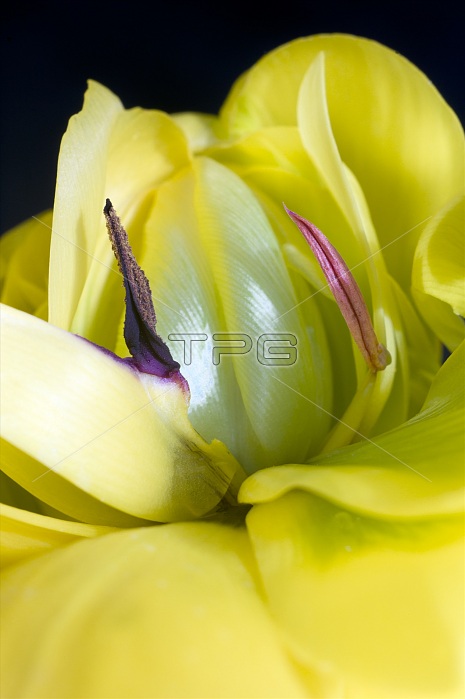
The centre of a double yellow tulip flower. The picture shows (left) an imperfectly developed anther (dark purple-brown) fused to the edge of a petal. A second anther (right, pink) has a more normal structure.Single flowers develop under the control of a succession of genes. In normal development, this gives rise to concentric layers of different tissues; sepals enclose the flower bud, with a ring of petals as the next layer, then anthers, with the female tissue at the centre of the flower. In double flowers, this pathway is disrupted; the cells that would have produced the anthers produce petals. This process is imperfect, with the result seen here on the left - a partial conversion, with anther-like tissue attached to a petal-like blade. Such flowers produce little if any seed; consequently they retain their integrity for longer than do single flowers, a virtue for gardeners
| px | px | dpi | = | cm | x | cm | = | MB |
Details
Creative#:
TOP24880327
Source:
達志影像
Authorization Type:
RM
Release Information:
須由TPG 完整授權
Model Release:
N/A
Property Release:
N/A
Right to Privacy:
No
Same folder images:

 Loading
Loading